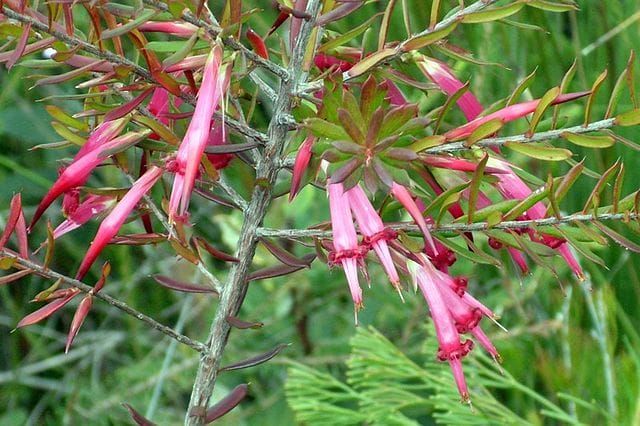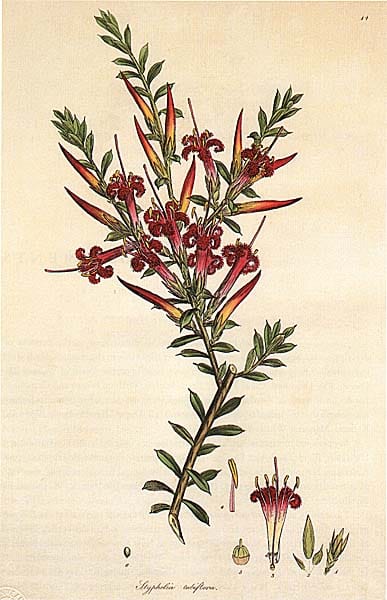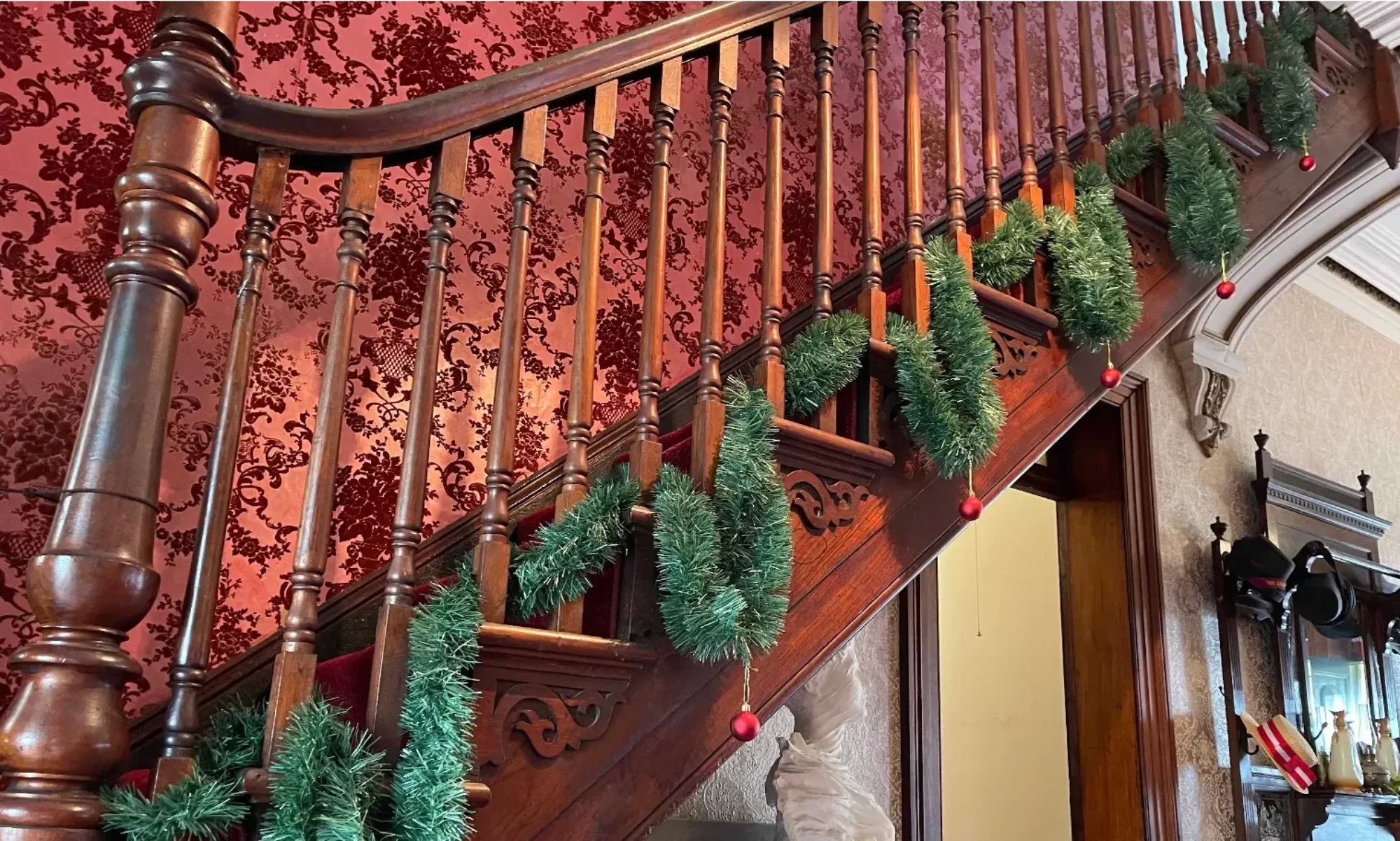Extract from The Propeller, February 1941
There’s many an old resident of the St. George district who will probably tell you, with proud memory of his schooldays, that you’re not a “dinki-di” Sydneyite until you’ve polished off a pocket full of five-corners. And, without any prompting, he’ll very likely add that, “As a ‘nation’ of five-corner eaters we are slipping”. Oddly enough there is a considerable amount of truth in such comments, since, in the days of fifty and more years ago, the name “five-corner” was a household word in many of the suburbs of Sydney, especially around St. George. In the five-corner season of the early summer it was a name that hung on the lips of almost every schoolboy — yes, and his sister, too. There’s many a local schoolroom whose floor has been littered with the well-chewed seeds of these wild berries of the bush. Indeed, it is familiarly known amongst those of the older generation that five-corners once enjoyed such popularity that, in season, they were bought and sold as a regular line in the old Paddy’s Markets, Sydney, and in some of the city fruit shops arid many a local boy and girl made pocket money by gathering them.
Yet today the chances are that nine out of every ten persons you meet haven’t even the faintest idea what a five-corner is, or wouldn’t even recognise a five-corner bush if they happened to see one. Moreover, amongst the new generation of school kiddies the pioneer custom of gathering and chewing five-corners has been rapidly replaced with the modern habit of ice cream licking and the munching of chewing-gum. In truth, what was once a most distinctively Australian pastime is gradually disappearing into the limbo of forgotten things. The reasons for these changes are, in a way, interesting, and several factors nave contributed towards them.

Let some of the old residents of St. George — all experienced five-corner eaters — have a word or two about schoolday memories of these native fruits. For instance, there’s the well known veteran of Hurstville, Mr. Jack Chappelow, whose father’s home, more than fifty years ago, stood amid thick bush down behind Allawah Railway Station, towards Blakehurst. With happy recollections, Mr. Chappelow remembers how, when he was a boy, the five-corner bushes grew thickly around the old homestead. He noticed that they seemed to flourish best along the rocky sandstone slopes, or else down on the sandy flats – but few, if any, would be met with back on the heavier clay country, such as occurs behind Hurstville and around Dumbleton or towards Campsie. In his young days this veteran, with his mates would make regular “expeditions” through the bush gathering in the spoils of the five-corner crop. They would spend hours filling tins and other containers – much the same as youngsters, and oldsters, do today when the blackberries are ripe. When a sufficiently bulky quantity had been accumulated Mr. Chappelow would give them to the local wood-carters to be taken into Newtown – which was then the nearest shopping centre. There they were sold by the shops to the public. And that’s how Jack Chappelow and his youthful mates earned odd shillings as pocket money, which was a novelty then for most children. Mr. Chappelow recalls that he gave many a pocketful of five-corners to Lochrin Tiddy – the man who, more than fifty years back, was the very first returning officer of Hurstville. Practically everybody, both young and old, chewed the wild fruits of the five-corners in those distant times, and such a custom proved a novel diversion to help break the monotony for those whose daily life was not readily furnished with the common enough sweetmeats of modern 1941. Along with the five-corners the pioneers also gathered from the bush such other wild berries and fruit as ten-corners, top-corners, ground berries, geebungs, native grapes (a bitterish as they are), lilli pillies, and the sour native currants.
Persons who have resided for any considerable time around the lower parts of Kogarah and Rockdale, and between Sans Souci and North Brighton along the flats, are the ones who have probably had much more experience with five-corners than anyone else in St. George. This is for the simple reason that the “fivie” bushes once grew the thickest of all in those areas, especially from Sans Souci to Cooks River, where they stood in veritable ”jungles” — so dense, in fact, that it was far easier to crawl along under them than to try and brush through. And, in that sandy country, such an adventure was invariably attended by the risk of coming face-to-face with marauding snakes, or else being tormented and stung by no end of “red joeys”. Many a tale about the “fivies” of Brighton will the old hands tell you. At the height of the season some of the “regulars” would spend hours down at the lower ends of Bestic and Bay Streets while they filled empty flour bags with the ripening berries – most of which would be lying on the ground under each bush.
Mr. Kinsela, of Sans Souci, and formerly of Bexley, is another of the “old school” who has many happy recollections about five-corner picking. He recalls the time, when he was a boy, when “fivies” could be bought at the old Paddy’s Markets, Sydney, for a penny an egg-cup full. Large quantities of them were traded there; and in later years certain city fruit shops displayed them for sale. Yet now-a-days it’s a safe wager that you won’t find a single five-corner in the whole of the city. One of their best collecting grounds, says Mr. Kinsela, was the scrub and bush that once spread thickly on either side of Woniora Road, from South Hurstville down towards Tom Ugly’s. Many a tin and basketful he and his school mates gathered down that way, after spending whole afternoons amongst the bushes. Today you could walk for miles around that locality – and Brighton too, for that matter and not see one five-corner bush. There are, however, odd ones still growing here and there in isolated patches, particularly in a spot like Oatley Park, or way out around Lugarno. On the Sutherland side of George’s River, and in wide bushland areas such as the National Park, lots of five-corners may yet be found in favourable situations.
Because of the overwhelming spread of suburban settlement within the last three decades most of the localities in St. George, and other parts of coastal Sydney, where “fivies” once flourished, have been entirely swept clean of their natural scrub and bush. In similar fashion to the more lordly gum-tree, the humble five-corner bush and his mates is fast disappearing beneath the crush of sardine-packed suburbs. No doubt that is one of the primary reasons why the pioneer tradition – handed down from the aborigines and the first white settlers – of five-corner gathering and eating is dying off. Another factor also in this historic change is that youngsters of the present generation are much more privileged with pocket money than their grandfathers were. Moreover, there are greater inducements today in the way of buying ready-made pleasures and pastimes. Youngsters, as a consequence, are more readily attracted to the civilised “fruits” of the sweet shops and the milk bars; and that goes too for the grown-ups.
And now, finally, a word or two about the five-corner bush itself – what the botanists will tell you. In the first place, the five-corners — of which there are eleven different kinds or species – are true native plants of Australia, and found no where else in the entire world. Not only did they grow principally in New South Wales, but they are confined almost solely to the coast and eastward slopes of the Blue Mountains. One or two types of five-corners, in fact, will be found nowhere else but on the sandstone zone of which Sydney is the centre. Thus it can be said that five-corners are unknown to the majority of Australians.

These wild plants are classed as members of the Australian heath family — of which they are said to be the largest and most beautifully coloured. Their botanical name is Styphelia; which was taken from the Greek word “styphelos”, meaning rough; which describes the stiff, compact and harsh nature of the shrub and its foliage. As mature fruit-bearing shrubs they may be found in heights of anything from two feet to eight feet and even taller, depending on the situation in which they are growing. Their leaves are on the small side – for example, smaller than those of the Christmas bush – and are of plain shape, but have sharp pointed tips. In the different kinds of five-corners the flowers vary in colour from pink and red to yellow, green, and white. They are tube-shaped, with lung stamens poking out through the opening. Honey-eaters and insects are fond of the flowers, as they hold sweet drops of nectar. It is in the late winter and early spring months that the five-corners come into bloom, and the ripening berries will be found from then on into the summer. Odd ones, of course, will be seen in fruit out of season. Now, it is an interesting point that the popular name of the shrub – five-corner – is really descriptive of its fruit, each of which is “wrapped-up”, so to speak, in five small leaves, which first held the flower. This produces the characteristic of five points or corners; which is an outstanding guide to the identity of this shrub. Each berry is described by botanists as being in the shape of a drupe, meaning that it has the appearance and structure, generally, of an olive, but on a much smaller scale. Oddly enough there is nothing startling about its flavour, and not much flesh covers the one central seed. It is, however, on the sweetish side when fully ripened, and has a distinctive taste, though only mild, which is not quite like any other wild berry. It is certainly the very opposite of the native currants! The succulent fruit of the five-corner, by the way, is properly ripe when it has fallen to the ground beneath the bush; although many “fivie” enthusiasts prefer to pick and eat those that are still amongst the green foliage.
This article was first published in the February 1964 edition of our magazine.
Browse the magazine archive.

